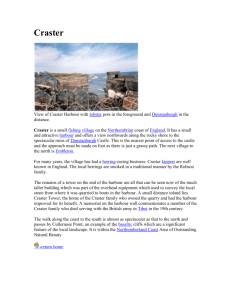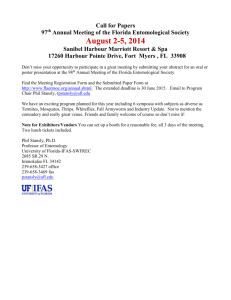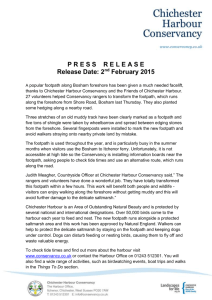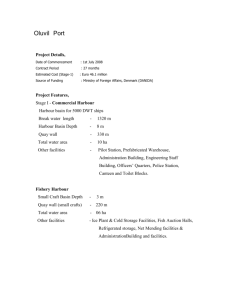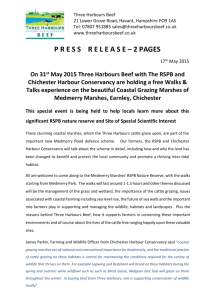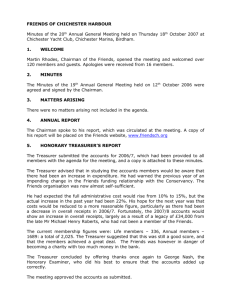Press release - Little Tern breeding success
advertisement
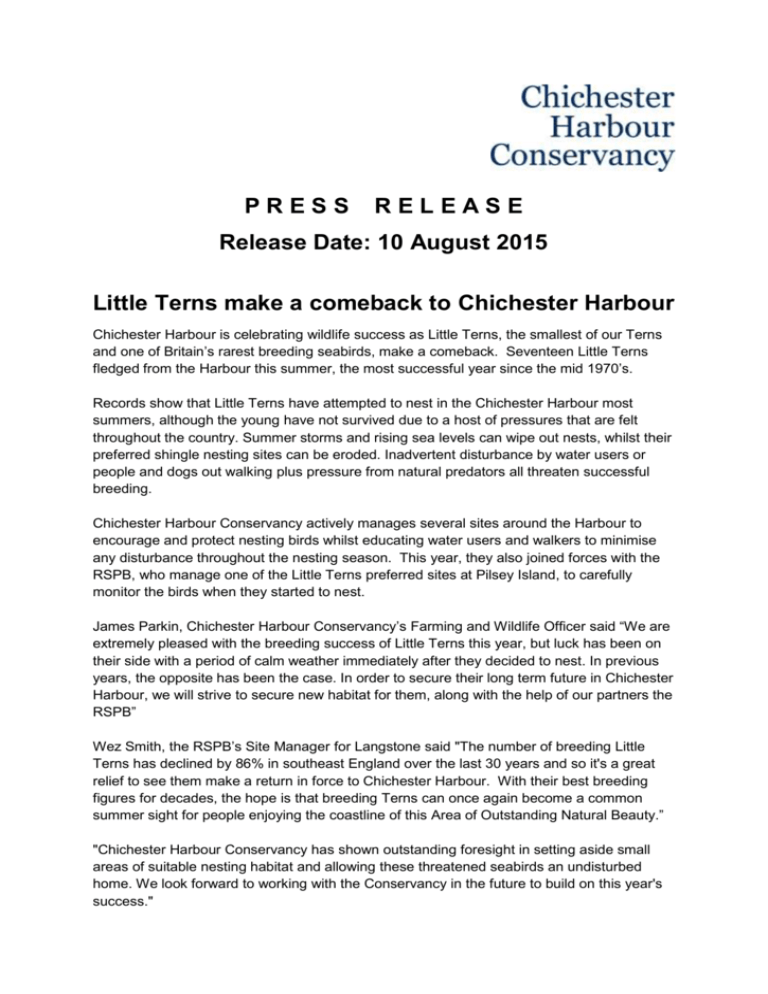
PRESS RELEASE Release Date: 10 August 2015 Little Terns make a comeback to Chichester Harbour Chichester Harbour is celebrating wildlife success as Little Terns, the smallest of our Terns and one of Britain’s rarest breeding seabirds, make a comeback. Seventeen Little Terns fledged from the Harbour this summer, the most successful year since the mid 1970’s. Records show that Little Terns have attempted to nest in the Chichester Harbour most summers, although the young have not survived due to a host of pressures that are felt throughout the country. Summer storms and rising sea levels can wipe out nests, whilst their preferred shingle nesting sites can be eroded. Inadvertent disturbance by water users or people and dogs out walking plus pressure from natural predators all threaten successful breeding. Chichester Harbour Conservancy actively manages several sites around the Harbour to encourage and protect nesting birds whilst educating water users and walkers to minimise any disturbance throughout the nesting season. This year, they also joined forces with the RSPB, who manage one of the Little Terns preferred sites at Pilsey Island, to carefully monitor the birds when they started to nest. James Parkin, Chichester Harbour Conservancy’s Farming and Wildlife Officer said “We are extremely pleased with the breeding success of Little Terns this year, but luck has been on their side with a period of calm weather immediately after they decided to nest. In previous years, the opposite has been the case. In order to secure their long term future in Chichester Harbour, we will strive to secure new habitat for them, along with the help of our partners the RSPB” Wez Smith, the RSPB’s Site Manager for Langstone said "The number of breeding Little Terns has declined by 86% in southeast England over the last 30 years and so it's a great relief to see them make a return in force to Chichester Harbour. With their best breeding figures for decades, the hope is that breeding Terns can once again become a common summer sight for people enjoying the coastline of this Area of Outstanding Natural Beauty.” "Chichester Harbour Conservancy has shown outstanding foresight in setting aside small areas of suitable nesting habitat and allowing these threatened seabirds an undisturbed home. We look forward to working with the Conservancy in the future to build on this year's success." Little Terns were first recorded in the Harbour in 1959 and their most successful breeding year was 1976, where 100 pairs of Little Terns were observed nesting. Their favoured site is a remnant embankment built by the Victorians in the 1860’s in an attempt to reclaim saltmarsh for agriculture. All that remains of the scheme now are sections of wooden posts lurking just above and below the surface of the water, but the areas of shingle that accumulates there are a favourite nesting spot for the Terns. Credit "(C) Paul Adams” Little Tern with chicks (for both photos) ENDS NOTES TO EDITORS: The photos included with this release are also sent as jpeg attachments. If you would like to discuss any aspect of this press release, please contact: Maria Court, Chichester Harbour Conservancy. E: maria@conservancy.co.uk T: 01243 512301 Chichester Harbour Conservancy is the statutory authority for Chichester Harbour with a legal duty to manage the Harbour and the surrounding land for the purposes of recreation and leisure, conservation and landscape protection. It has a wide range of powers to control navigation, moorings, works and dredging, as well as to maintain and improve the wildlife value and the landscape. National and international designations Chichester Harbour is designated as an Area of Outstanding Natural Beauty (AONB) to ensure that it is conserved and enhanced for the enjoyment of all. Chichester Harbour Conservancy works with national and local government, environment organisations, landowners and local businesses and communities to ensure that these landscapes and the wildlife living in them are protected and enhanced. The intertidal areas across Chichester Harbour are designated at national (Site of Special Scientific Interest), European (SPA, SAC) and international level (Ramsar site) in order to protect the diverse and fragile range of habitats such as saltmarsh and mudflats present within the harbour, along with the associated animals and plants. Over 50,000 waders and waterfowl are present in the harbour through the winter months, while terns and waders will nest here during the spring and summer. Saltmarsh grows between low and high tide and has adapted to cope with the rigours of intertidal life. Visitors can help protect the delicate saltmarsh and its wildlife by walking on the footpath.
